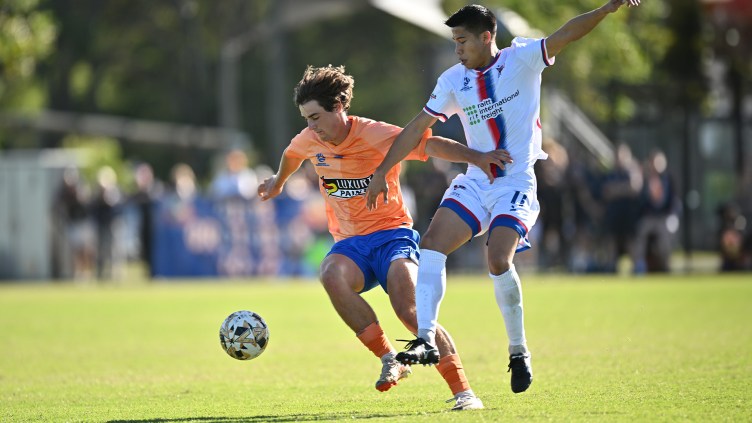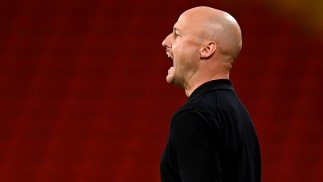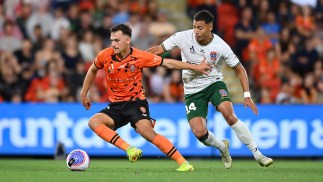Seventeen years after the last NSL Cup final, the dream of resuscitating a nationwide Cup competition is about to become a reality.
The magic, the romance, the drama, of the Cup is back, rescued from the dustbin of history. Literally.
Seventeen years after the last NSL Cup final, the dream of resuscitating a nationwide Cup competition is about to become a reality. What it will be called has yet to be determined, but we’ll give it a working title. The FFA Cup. My personal favourite is the Australia Cup, which is where the dustbin reference comes into play.
The original Australia Cup was contested for seven seasons, between 1962 and 1968. The last winners were Sydney Hakoah, who kept the trophy in the cabinet of their licensed club at Bondi Beach until they sold the building, which was eventually demolished two years ago.
Needless to say, the trophy should have remained with all the other silverware accumulated by a club which won five NSW championships between 1968-75, before continuing to set the benchmark in the formative years of the NSL (as Sydney City). These days, the club competes in the third-tier of NSW football.
Hakoah Sydney City may have big plans to revive at least some of their past glories, but somehow one of their most cherished possessions – the Australia Cup – was forgotten in the move to new premises at White City. Believe it it not the trophy – a large, heavy, vase inscribed with the names of the six winners (Sydney Hakoah won it twice) – ended up buried in a pile of rubble next to a wall alongside their former social club in Hall Street. And there the story could have ended, but for the eagle eyes of a signwriter, Fred Schuyt, who was working on the site.
Schuyt, a long-time footballer and administrator from Sydney’s west, noticed one of the handles sticking out from beneath a pile of debris as he was removing an old sign. On further investigation, he found the lid, and some figurines, and was able to put the trophy back together again. Schuyt gave the hidden gem a clean and polish, and while there were discussions to hand it back to the Hakoah club he ultimately kept it in safe keeping until handing it over to the FFA earlier this year.
The World Cup has it’s legendary story about Pickles, the collie who found the stolen Jules Rimet trophy under a hedge in South London just before the 1966 World Cup. Now we have our own fable of a trophy brought back from the dead. Is that a good enough reason to call our new knockout competition the Australia Cup? For me it is.
We did have the NSL Cup, of course – the successor to the Australia Cup which lasted 20 years (and 19 editions) before it, too, disappeared without a trace after Collingwood Warriors beat Marconi Stallions in the 1996 final, played before just over 5,000 fans at Lakeside Stadium in Melbourne. But there is an important distinction.
While the NSL Cup rarely captured the public imagination, and only featured state league clubs in the early years before shrinking into a midweek tournament exclusively for the clubs in the top tier, the Australia Cup truly was a competition ahead of its time. In the early 1960s, as the game was emerging from its period of FIFA-sanctioned isolation, the newly-formed ethnic clubs were flexing the muscles in many ways, and a Cup competition was seen as an important statement of intent. If travelling outside the city was a novelty, travelling interstate was unheard of. For the first time, players began to feel like professionals.
That’s the way the triumphant Sydney Hakoah players saw it as they travelled to places like Brisbane, to play Bardon Latrobe, and Western Australia, to play Perth Azzurri. ”We had four days in Perth to prepare for the match (the 1968 semi-final),” recalls Welsh winger Keith Jones. ”For the time, that was incredible.”
If there is one player who encapsulates the Australia Cup era it’s goalkeeper Peter Fuzes, who made his debut in the tournament as a 16-year-old (1965) – collecting a winner’s medal in the process – before going on to play in two more finals (a loss in 1966) and the win in 1968. The 1968 win over Melbourne Hakoah completed an amazing season for Sydney Hakoah, who won all four trophies (pre-season, minor premiership and championship were the others) on offer. ”I think we had five internationals, and were were unstoppable,” says Fuzes. ”I know the club went on to great things, but that was a team which would have succeeded in any era.”
Among the stars were Dennis Yaager, whose promising career at Everton was cut short by injury, Ray Baartz – a record signing from Adamstown Rosebuds who had also been in England with Manchester United – and decorated Socceroos Alan Marnoch and John Watkiss.
Just why the Australia Cup was taken off the calendar remains a mystery – it might have been a budgetary decision made by the cigarette company which sponsored it. Either way, we wouldn’t get another Cup competition for another nine years, but for a multitude of reasons the NSL Cup never really felt like the real thing.
So now we come the full circle, and much to the delight of the purists the magic of the Cup will resume next year, in all it’s glory. The groundswell of enthusiasm, and support, for the Cup has been enormous. Thankfully, and justifiably, it will be used to build a bridge between the Hyundai A-League and the lower tiers of our football pyramid.
If the Australia Cup was around this year, for instance, we’d have the amateurs of Urunga Raiders, from a seaside village in Northern NSW, mixing it with the big boys in the last 32, along with the likes of APIA-Leichhardt, Ashfield FC, Edgeworth Eagles, Tilford Zebras, Bayswater City, Olympia Warriors, Cooma Tigers and Adelaide City. Small clubs, famous clubs, ambitious clubs, all dreaming of a giant-killing. Now that’s a tale worth telling.



